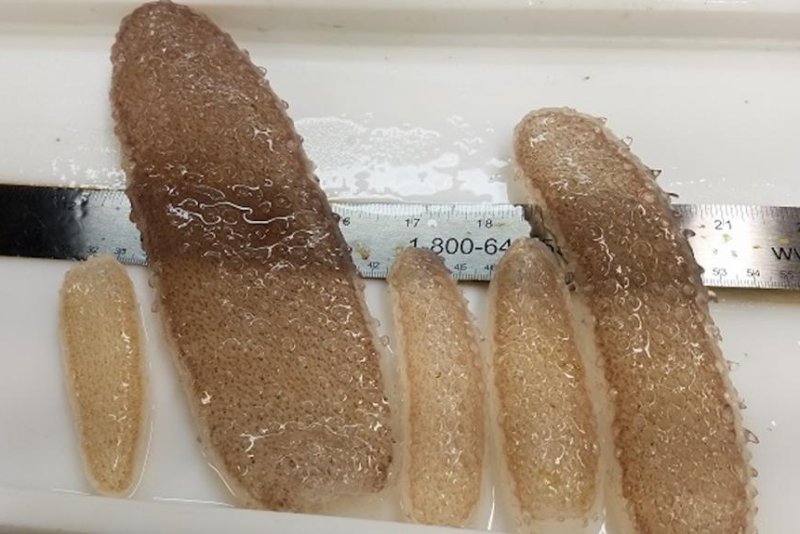The strange, cucumber-shaped colonies of multi-celled organisms are being found by the millions in the waters off the coast of the Pacific Northwest. Photo by Northwest Fisheries Science Center/NOAA
June 20 (UPI) -- Strange, cucumber-like creatures are blooming in the coastal waters of British Columbia. The organisms, called pyrosomes, are native to the tropics. Scientists are worried their presence could upset the local ecosystem.
Most of the bioluminescent invertebrates measure a few inches in length, but some can grow up to two feet long. They've been arriving by the millions in recent months, becoming trapped in fishing nets and stuck on fishing lines.
Pyrosomes translates to "fire bodies," a reference to their bioluminescence. At night, the millions of tubes glow in the dark.
Each tube-like creature is actually many creatures, a colony of multi-celled organisms call zooids. They've been spotted from Oregon to the Gulf of Alaska, and most recently, off the coast of British Columbia.
Early this spring, a research vessel in Oregon netted 60,000 pyrosomes in five minutes.
Warmer than usual waters have triggered a variety of unusual ecological phenomena along the West Coast over the last few years -- from sick sea lions to exotic sea snakes. But waters have cooled over the last several months and many biologists hoped ecosystems were normalizing.
Researchers in British Columbia suggest the arrival of the odd creatures may represent one last hoorah for unusual migrations. The tuber-like specimens may be the last travelers on the tail end of dissipating warm water currents.
"Right now, these are only visitors, not an invasive species, yet," Moira Galbraith, a zooplankton taxonomist at the Institute of Ocean Sciences in Sydney, British Columbia, told CBC News. "They are here for now, until the currents take them elsewhere."
But no one is entirely sure why they're in British Columbia or how long they'll stay. And researchers are scrambling to determine how they might be impact local ecosystems. They must be consuming a considerable amount of nutrients, researchers say, to be forming such large densities of biomass.
Though a few scientists have found fish with pyrosomes in their guts, it's not clear whether the fish are eating the organisms on purpose, or simply can't avoid them.
"For something that's never really been here before, the densities are just mind-boggling," says Laurie Weitkamp, a biologist with the Northwest Fisheries Science Center, told National Geographic. "We're just scratching our heads."















